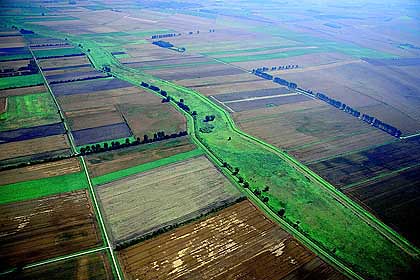The mathematicians and computer scientists looked through thousands of records of land transactions dating back as far as 1260 in a Southwest part of France. The result of their study shows 'how medieval peasants and lords were connected.' Even if the title of the Nature News article is somewhat ironic -- 'Researchers give a French province the 'Facebook' treatment' --, this mathematical study is pretty serious. And its title is more enigmatic: 'Batch kernel SOM and related Laplacian methods for social network analysis' (SOM meaning 'self-organizing map'). But read more...
You can see above "a representation of the medieval social network with force directed algorithm." (Credit: Romain Boulet et al.) This figure has been made by using the open source graph drawing Tulip software.
See original post - 'A 13th century social network'
-







![[graphic]](http://s.wsj.net/public/resources/images/MK-AP456_VIDEO_20080505210415.gif)





